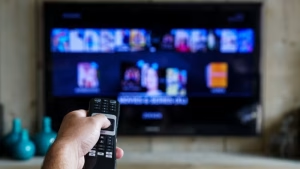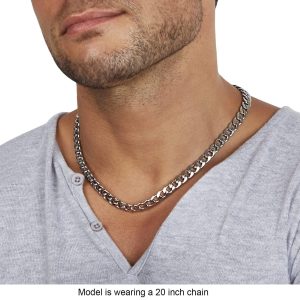Businesses are big on energy efficiency. It helps keep costs down and minimize environmental impact. This is why a well-designed commercial roof is so important. Lower utility bills and a more comfortable workspace can be the result of making the right choices. Five ways commercial roofing can improve energy efficiency:
1. Cool Roofing Materials
Some roofing materials reflect more sunlight than others. These are called cool roofs. They stop the heat from entering the building too much. Materials or surfaces that are lighter colored or that have been specially coated work best. The air conditioning system doesn’t have to work as hard when the roof stays cooler. It reduces energy usage and prolongs the life of the cooling system. This is a small change that makes a big difference.
High solar reflectance and thermal emittance materials significantly improve energy efficiency. On the other side of the coin, businesses can also study roof plans that are structured for better ventilation, removing the trapped heat from cars. It helps keep indoor temperatures cooler, reduces cooling costs, and helps create a more sustainable, eco-friendly building environment.
2. Proper Insulation
Insulation acts as a barrier against outside temperatures. Without it, heat seeps in during summer and escapes in winter. The right insulation keeps indoor temperatures stable, reducing the need for constant adjustments. This means less strain on heating and cooling systems. There are many types of insulation available. Some are built into roofing materials, while others are added separately. Choosing the right kind ensures year-round energy savings and enhances comfort. Spray foam, rigid board, and fiberglass are common insulation types. Adding a vapor barrier can prevent moisture buildup, which helps maintain insulation performance over time, extending its effectiveness and reducing the risk of mold or mildew growth. Proper insulation also improves soundproofing, contributing to a quieter indoor environment.
3. Green Roofing Solutions
Green roofs are becoming more popular. These roofs have vegetation and soil layers, providing natural insulation and reducing heat absorption. A green roof also improves air quality, manages stormwater, and keeps the building cooler in summer while staying warmer in winter. This eco-friendly solution benefits both the business and the environment. Green roofs reduce noise pollution and add aesthetic value, creating a more pleasant and attractive space.
Additionally, they extend the lifespan of a roof by protecting the surface from harsh weather conditions, UV exposure, and temperature fluctuations. Furthermore, they contribute to energy savings by reducing the need for air conditioning and creating a healthier indoor environment. By supporting biodiversity, green roofs also offer a habitat for local wildlife, enhancing the ecological footprint of urban areas.
4. Reflective Roof Coatings
Reflective coatings add another layer of protection against heat. These coatings are applied to the roof’s surface, bouncing back sunlight instead of absorbing it. This reduces heat buildup and keeps indoor temperatures lower. Reflective coatings work well on various roof types and help prevent damage from UV rays, extending the life of the roof. Businesses can choose from different types, such as acrylic, silicone, and elastomeric coatings. These coatings not only improve energy efficiency but also provide a waterproofing barrier against leaks, enhancing durability and reducing maintenance costs over time.
5. Regular Maintenance and Upgrades
A neglected roof won’t perform efficiently. Cracks, leaks, and wear lead to energy loss. Routine inspections help catch these problems early. Simple repairs and upgrades can boost efficiency. Adding new layers or improving drainage also helps. Businesses that invest in regular maintenance save money in the long run. Roof inspections should be done at least twice a year to detect any damage. Upgrades such as adding solar panels or skylights can also contribute to better energy efficiency and sustainability. Hiring professionals ensures that repairs and upgrades are done correctly and safely, maximizing the roof’s performance and longevity. For instance, Austin roofers specialize in tailoring solutions to the region’s specific needs, helping businesses achieve energy savings and long-term durability.
Conclusion
An energy-efficient roof is a smart investment. It reduces costs, enhances comfort, and helps the environment. Businesses that focus on roofing improvements enjoy long-term savings. A few simple changes make a big impact. With the right materials and maintenance, commercial roofs can work harder for businesses every day, improving energy efficiency, reducing carbon footprints, and ensuring optimal performance. This proactive approach not only cuts operational costs but also boosts a company’s sustainability efforts, making it more attractive to eco-conscious clients and investors.
To further optimize energy savings, businesses can turn to Utility Bidder to compare energy suppliers and secure the most cost-effective tariffs for their sustainability efforts. After this sentence: It helps keep indoor temperatures cooler, reduces cooling costs, and helps create a more sustainable, eco-friendly building environment.
Incorporating energy-efficient roofing solutions not only reduces utility costs but also enhances the overall sustainability of your business. By choosing the right materials and design, you can significantly lower your building’s carbon footprint. Consulting with a professional Roofing Contractor can provide valuable insights into the best options for your specific needs. They can guide you through the selection of reflective coatings, green roofs, or solar panel integration, ensuring that your commercial property maximizes energy efficiency. This strategic approach not only benefits the environment but also improves your company’s bottom line, making it a wise investment for the future.
In addition to these energy-saving strategies, businesses can explore various roofing services that further enhance efficiency. By opting for advanced roofing solutions, companies can significantly reduce energy consumption and improve overall building performance. For those interested in exploring these options, you can get details on a range of services that cater to specific commercial roofing needs. This approach not only supports sustainability goals but also contributes to long-term cost savings, making it a smart investment for any business looking to optimize its energy use.
In addition to optimizing commercial roofing for energy efficiency, it’s essential to consider residential roofing solutions that can also contribute to energy savings. Homeowners looking to reduce their energy bills can explore various roofing materials and technologies designed to enhance insulation and reflectivity. For those interested in upgrading their home roofing systems, it’s beneficial to see the options available that offer both aesthetic appeal and energy efficiency. By selecting the right roofing materials, both businesses and homeowners can significantly lower their energy consumption, leading to cost savings and a reduced environmental footprint.






